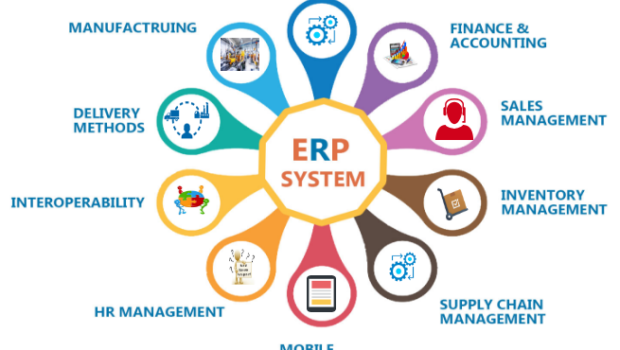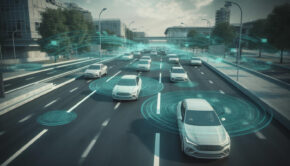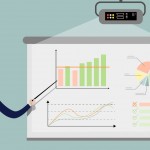The Future of ERP for SME’s
“Necessity is the mother of invention,” goes the old saying, and that certainly has held true in the ever- changing world of business software (ERP software).
For the record, the term ERP means Enterprise Resource Planning, meaning a business software solution that is designed to manage all the departments of a trading company, i.e. the complete Enterprise.
This article is about the current state of business software for SME’s and where we are going in our post ‘Covid’ world. If you are interested in how we got here, and where we have been, the footnote provides a quick synopsis.
Today the SME trading company has a choice of proven, easy-to-use, and affordable software solutions that they can use when spreadsheets run out of steam for inventory management and more.
These solutions are easy to buy, easy to implement and you can get them running in typically 3 to 6 weeks.
The horror stories of protracted ERP projects and costly implementations are fading into history.
Barry Linnard of Linnard Associates is one of many people who specialize in implementing these solutions in SME’s and knows first-hand the challenges they face, “Spreadsheets by their nature tend to drive departmental independence, when the last thing the decision makers need is multiple versions of the truth. By adopting one of these simple-to-use, easy-to-implement entry level ERP systems you are instantly creating unity in the business. Everyone is working off one common set of data, and not their own departmental interpretation of it.”
So, we have lived through the Covid ‘lockdown’ and are beginning to see some green shoots with businesses re-emerging. What does the post-Covid world look like? If we had to guess the consequences at the outset, what would you have predicted? Increased drinking? A baby-boom on the way? A dramatic increase in video conferencing, forced on us but now part of the everyday fabric of our lives. Who had heard of ‘Zoom’ before the lockdown? Yet today baby-boomers are now called ‘baby-Zoomers’!
One consequence has been a recognition of the need for more business automation. A report by the esteemed Boston Group, published this week, flags a near 50% rise in the purchase of industrial automation equipment in recent weeks. A conversation with one of the leading providers of business analysis software for SME’s confirmed that ‘their business has not hiccupped at all’ through the maelstrom.
Most SME leaders have spent the enforced downtime thinking long and hard about their businesses and how they can be more effective ‘on the other side’. They have analyzed and re-modelled processes, and looked at how technology can help, both through warehousing and factory automation and in managing information.
A revolution is going on around us, mostly unseen. It is going to creep up on us and surprise us, as happened with cell phones and more recently the internet. Both came from nowhere then were instantly irreplaceable.
The next revolution is called AI, or Artificial Intelligence.
Microsoft are calling it the ‘new oil’. It is that important
And it is here now. Have you noticed it yet? Ever noticed how, when you drive down your road at 8am, your phone opines ‘7 minutes to Friend’s Christian School, no hold ups’. The phone is predicting where you are going based on previous behavior and is providing useful and timely data to you that has value.
Let’s not talk about online adverts, and how people track what we search for, what we buy and what we look at but don’t buy, so as to steer annoyingly relevant online adverts in our direction.
Leave aside the whiff of ‘Big Brother’ and the fact that Google now describes itself as a ‘tracking company’ and no longer a ‘search engine company’.
Just imagine this future
“The Port of Santos, Brazil, dock workers are threatening to start a 1-month strike, your shipment of parts may be delayed. Action potentially required”.
“Storms are predicted next month in Eastern Ohio, this will likely disrupt your grain harvest, with 30% of the grain crop at risk. Action required to consider alternative sourcing”.
ERP and inventory management systems no longer need to be closed loop systems. Your business has always been impacted by real world events. You often just didn’t know about them until it was too late.
Not long ago, Ford famously caught a cold when production stopped because floods in Thailand impacted one of Ford’s 2nd tier suppliers. The first thing Ford knew about it was when parts failed to arrive. It’s not just SME’s that are caught out!
This future reality is here today. Billions have been and are being invested in the development of AI. The engines are there now for us to use and will keep improving.
The SME ‘ERP’ vendors are starting to recognize that massive benefits can be afforded to their customers by embracing these ‘AI’ services, most of which are priced by subscription and usage.
So, if you are an SME embracing spreadsheets, if not yet suffering from them, please consider moving to an SME specific ‘ERP’ solution. You run an integrated business, you owe it to yourself to run an integrated business system, offering you consistent data and one version of the truth. And in embracing such a solution, you too can move to a real world predictive future, where because you are nimble and because you have the best information, you can and will ‘steal a march’ on your competition.
If you want to know more about SME ‘ERP solutions and that are easy-to-use, easy-to-implement and affordable, then Google ‘SME Inventory Management Software’. Take a look at NetSuite and then remember you should be paying around $20/user/month, so put NetSuite down and move on and look again. Avoid big systems cut down to work in SME’s or the implementation will still kill you.
Footnote
In the 1960’s, the term MRP was born, becoming the cornerstone of manufacturing and distribution business software throughout the 1970’s. MRP originally meant Materials Requirements Planning and was a key software innovation in the 1970’s. MRP allowed a manufacturing company to calculate what materials it need to make or buy, taking into account the current stock position, sales order demand, purchases due in, works orders due, etc. It worked after a fashion, but in planning only materials in isolation from labor and machines, it provided only half the picture, hence the move to MRP2 as affordable computing power allowed more complex algorithms.
The term MRP2 means ‘Manufacturing Resource Planning’ – meaning software that manages and synchronize both the inventory, labor and associated resources (machines, tooling, etc.) to provide a complete picture of what you need to buy and/or make and by when. MRP2 solutions drove the business software sales during the 1980’s.
ERP (Enterprise Resource Planning) was borne by the realization that planning just materials and labor/machines was also naive, as in truth business leaders needed a complete view of their entire business including design, estimating, quality, laboratory etc. That is, they needed a complete view of their entire enterprise with up-to-date and accurate data to enable effective decision making.
















